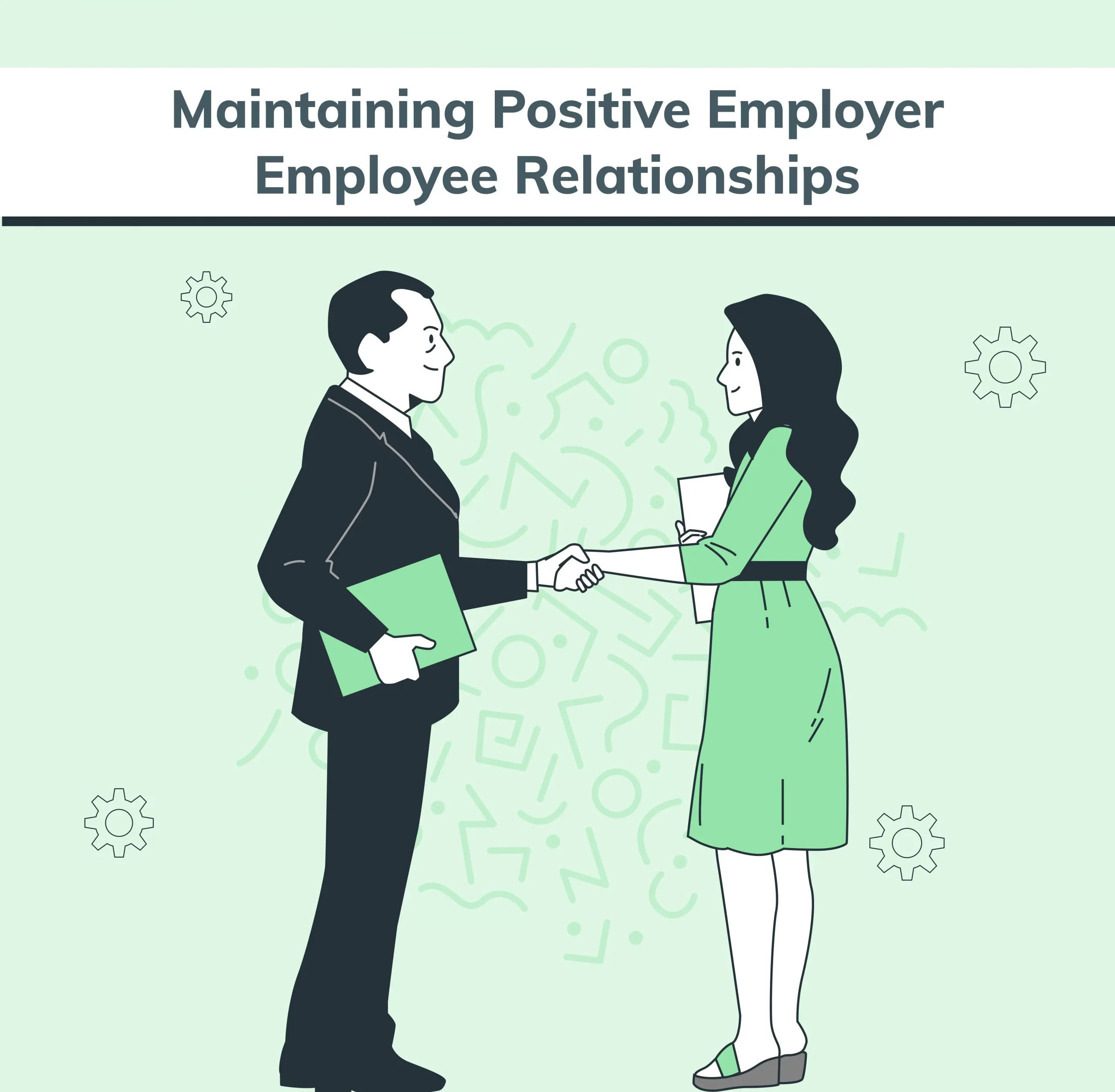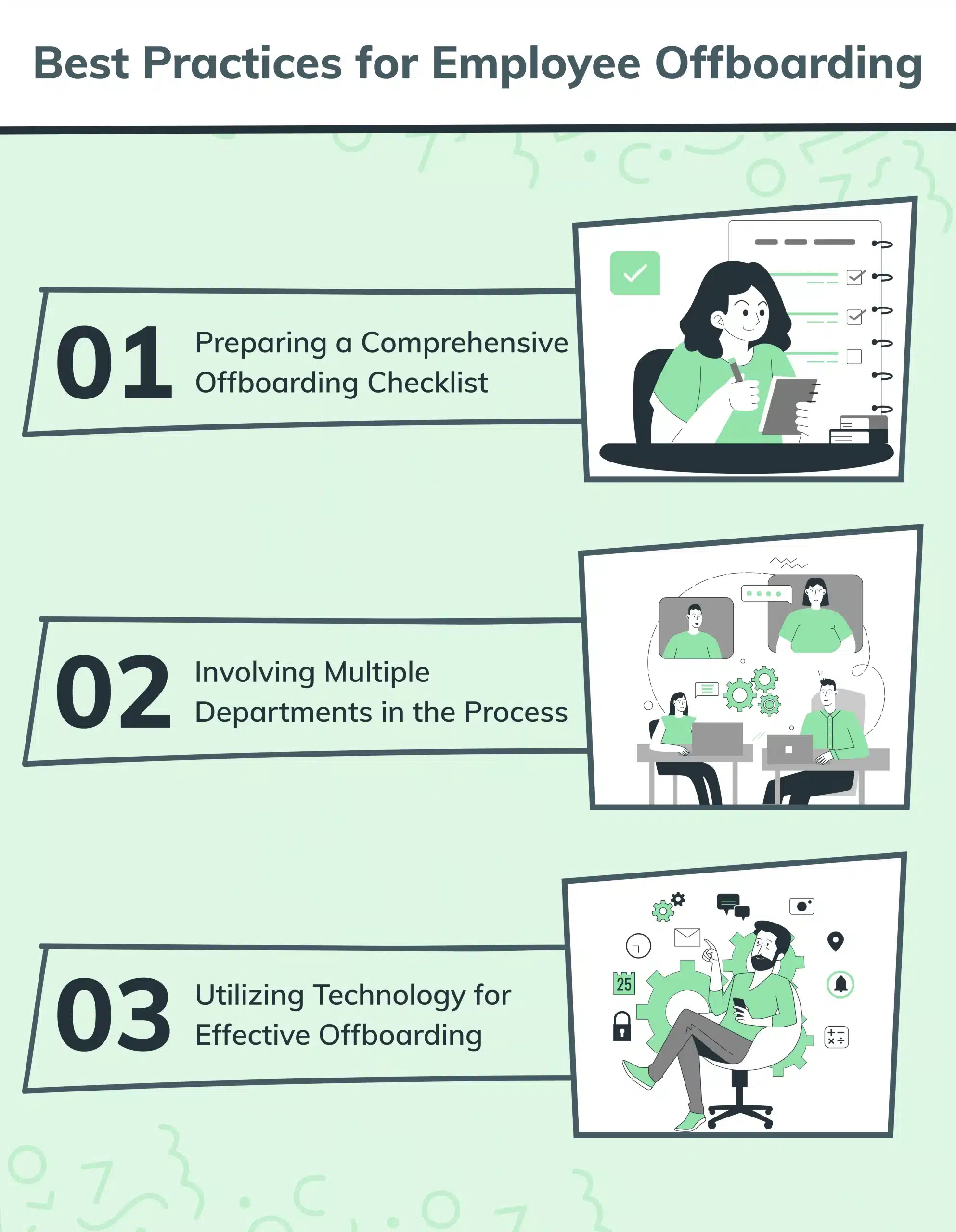Table of content
It refers to the process of transitioning employees out of the organization, and it’s not just about saying goodbye. It encompasses various strategies and actions that can have a lasting impact on your business. In this blog, we will explore why employee offboarding matters, and how it can positively shape your company culture and reputation. In this informative article, we’ll also address the risks of neglecting this process. From maintaining employee morale to protecting sensitive company information, we’ll cover it all.
Key Components of Employee Offboarding
There are several key components that play a pivotal role in ensuring a smooth and productive transition for both departing employees and the organization as a whole.
Exit Interviews
As an integral part of the offboarding process, exit interviews provide a valuable platform for departing employees to share insights and experiences. These sessions offer employers a unique opportunity to gain constructive feedback, understand the reasons behind the departure, and identify areas for improvement.
By fostering open communication during exit interviews, organizations can uncover valuable information that may contribute to enhancing workplace culture, addressing potential issues, and even retaining top talent in the future.
Knowledge Transfer
The transfer of knowledge is a crucial aspect of employee offboarding. It involves documenting and sharing the departing employee’s institutional knowledge, skills, and job responsibilities with their colleagues or successors. This proactive approach ensures a smooth transition, minimizes disruptions, and allows the organization to maintain operational continuity. Knowledge transfer not only safeguards critical information but also empowers the incoming team members, enabling them to adapt quickly to their new roles.
Return of Company Property
A seamless offboarding process includes the organized retrieval of company property from departing employees. This may encompass physical assets like laptops, access cards, and other equipment, as well as the return of digital assets such as login credentials and proprietary information. By efficiently managing the return of company property, organizations uphold security protocols, safeguard sensitive data, and maintain a professional and compliant exit process.
Communication and Transition Planning
Effective communication and transition planning are vital to ensure all stakeholders are informed and prepared for the departure. This involves clear communication with team members, clients, and relevant departments regarding the upcoming changes.
Additionally, developing a robust transition plan helps allocate responsibilities, reassign tasks, and establish timelines for a seamless handover. This collaborative effort minimizes disruptions, fosters a sense of stability, and underscores the organization’s commitment to maintaining productivity even during periods of personnel changes.
Benefits of Effective Employee Offboarding
Embracing effective offboarding practices yields a myriad of benefits, transcending the departure of an individual team member. It’s not just a farewell; it’s an opportunity to fortify your organizational foundation.
Positive Impact on Company Culture
Effective offboarding, when executed thoughtfully, contributes to a positive company culture. It sends a powerful message to your remaining staff that their contributions are acknowledged and valued, even when parting ways.
By fostering an environment where farewells are respectful and supportive, you cultivate a culture of appreciation and empathy. This, in turn, boosts morale and encourages the belief that individuals are integral to the collective success of the team.
Preserving Institutional Knowledge
One of the invaluable outcomes of effective offboarding is the preservation of institutional knowledge. As team members move on, their wealth of experience, insights, and job-specific know-how can be seamlessly transferred to remaining colleagues. This strategic knowledge transfer safeguards against information silos and ensures that the organization retains critical expertise. Preserving institutional knowledge empowers your team to navigate challenges and innovate, irrespective of personnel changes, fostering long-term resilience.
Maintaining Positive Employer-Employee Relationships
A well-managed employee offboarding process plays a pivotal role in sustaining positive employer-employee relationships. It demonstrates a commitment to the well-being of departing staff, paving the way for potential future collaborations. By providing support during the exit journey, organizations not only enhance their reputation as considerate employers but also create an alumni network of advocates. Positive relationships extend beyond an employee’s tenure, potentially leading to referrals, partnerships, or even rejoining the organization later in their career.
Risks of Neglecting Employee Offboarding
Neglecting proper offboarding can expose your organization to significant risks, impacting various facets of your business.
Impact on Morale and Productivity
Failing to execute a thoughtful offboarding process may lead to a dip in morale among remaining employees. The abrupt departure of a colleague without closure or communication can disrupt team dynamics and dampen overall productivity.
A well-managed offboarding process, on the other hand, promotes a sense of transparency and reassures your team, preserving morale and sustaining productivity levels.
Potential Legal Consequences
Neglecting legal considerations in the offboarding process can result in serious consequences. Inadequate documentation, mishandling of sensitive information, or overlooking contractual obligations may expose your organization to legal liabilities. Ensuring compliance with employment laws and contractual agreements safeguards against legal disputes, protecting both the departing employee and the company.
Negative Effects on Employer Brand
Effective offboarding is a visible reflection of your company’s values and commitment. Neglecting this process can tarnish your employer brand, creating a negative perception among current and potential employees.
A poor offboarding experience may lead to negative online reviews and word-of-mouth, impacting recruitment efforts and overall employer reputation. Prioritizing a positive departure process, conversely, enhances your brand image and showcases your organization as employee-centric and responsible.
Best Practices for Employee Offboarding
When it comes to offboarding, adopting best practices is paramount for a smooth and efficient transition. Elevate your offboarding process by incorporating these key strategies:
Preparing a Comprehensive Offboarding Checklist
Start by creating a detailed offboarding checklist that covers all necessary steps, from return of company property to knowledge transfer. This ensures a systematic and thorough exit process, minimizing oversights and promoting consistency in handling departures. A comprehensive checklist acts as a roadmap, guiding both employees and relevant stakeholders through the necessary procedures and tasks.
Involving Multiple Departments in the Process
Recognize that employee offboarding is a collaborative effort. Engage multiple departments, including HR, IT, and the departing employee’s team, to ensure a holistic approach. Each department plays a unique role, from handling paperwork to managing technology assets. This collaborative approach not only distributes responsibilities but also fosters a sense of collective responsibility for the departing employee’s smooth transition.
Utilizing Technology for Effective Offboarding
Leverage technology to enhance the efficiency and accuracy of the offboarding process. Implement digital tools for documentation, communication, and knowledge transfer. Technology aids in seamless coordination between departments, facilitates remote offboarding when necessary, and ensures the secure transfer of digital assets. Embracing technological solutions reinforces the organization’s commitment to modern, efficient, and employee-centric offboarding practices.
Conclusion
In conclusion, the significance of offboarding cannot be overstated. As you navigate the dynamic landscape of workforce transitions, recognize that a well-executed offboarding process contributes to organizational resilience and employee satisfaction. Recap the importance of preserving institutional knowledge, fostering positive company culture, and maintaining strong employer-employee relationships. Encourage the implementation of effective offboarding practices as a strategic investment in the long-term success and reputation of your organization. By prioritizing thoughtful and comprehensive offboarding, you not only navigate departures with grace but also pave the way for sustained growth and positive employee experiences.



